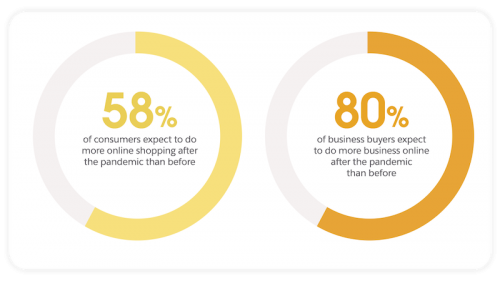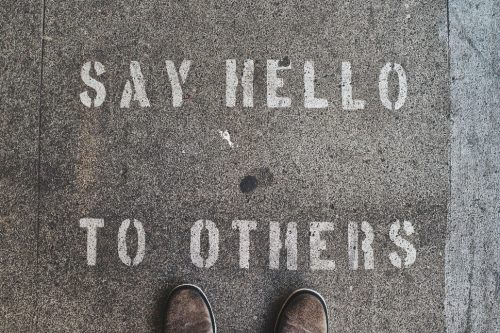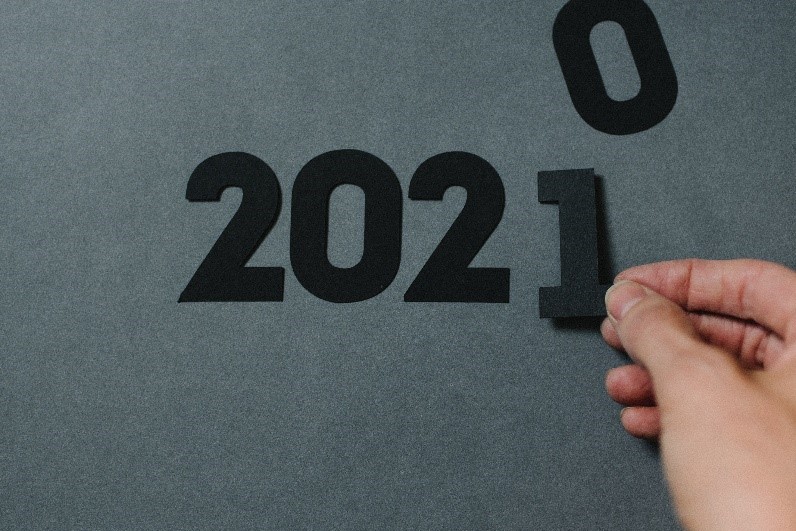Early November brings certain reliable events to our New England neighborhood.
The whir of leaf blowers replaces the buzz of lawn mowers as trees shed their remaining colorful leaves.
At least one household begins prematurely displaying holiday lights.
Sweaters, scarves, and gloves appear on dog walkers.
And Noah comes to sell us Hanukkah candles.
Noah is a sandy-haired boy scout who began ringing our doorbell with his father, Jeff, a decade ago to sell us Hanukkah candles as part of his troop’s holiday fundraiser.
The first time Noah rang our bell, he was so small that when we opened the door, we saw Jeff standing on the sidewalk before we saw Noah in front of us on our doorstep.
He was shy but managed to get the words out to offer us his holiday wares, with a little coaching from his dad.
Over time, Noah got more comfortable making his pitch. In the past few years, he’s come by himself.
Last Saturday night we invited Jeff and Tina, Noah’s mother, over with another neighborhood couple, Jodi and David, to gather around the fire pit on our deck.
As we nibbled desserts, my husband Dan proudly told Tina and Jeff how a very tall boy had rung our doorbell to sell us Hanukkah candles, and how he had gently turned him away because we were saving our business for Noah.
Jodi and David chimed in that the same boy had visited their house and that they too were waiting to buy from Noah.
There was a pause.
Then Tina and Jeff informed us that the tall boy was Noah.
The boy who had taken years to inch up to our eye level is now a towering 5’11”!
And unrecognizable to us with his face mask on.
2020, The Unrecognizable Year
Just as we could not have predicted how much Noah would change in a year, none of us foresaw the topsy-turvy time 2020 turned out to be.
How ironic that a year that sounds like perfect vision blindsided us.
A year ago, I hate to admit, I’d probably stare a bit at someone wearing a mask and wonder if they were ill. Now I avoid people not wearing a mask and consider the mask-wearing people I see to be the healthy ones.
A year ago, I relished traveling to two marketing conferences. My love of travel made it easy for me to not mind crowded airports and standing-room-only conference sessions. Now indoor gatherings of any size cause anxiety. I attended three conferences virtually from my office this year.
A year ago, I remember chuckling when my yoga instructor said you are all practicing at home too, right? Now I’ve done over 100 classes in my den.
I bet you have your own list of I-had-no-idea-I-would-be-doings.
While our lists may differ, what we share is that our focus has shifted to protecting our health, managing fear and anxiety, and a home-based life.
And we are all grieving our former lives.
2020, The Technological Leap Year
While 2020 slowed us down personally, it propelled our technology usage with a Noah-like growth spurt.
A recent global McKinsey study shows the average share of consumer interactions that were digital leapt from 36 percent in December 2019 to 58 percent in July 2020. For North America, the share grew from 41 percent to 65 percent. McKinsey estimates that’s three years of digital adoption growth in just seven months.
This is no surprise to us, right? We’ve been on our phones and computers to communicate and place orders way more than we were a year ago.
McKinsey’s study also shows that companies have accelerated the digitization of their customer and supply chain interactions by three to four years. And their product portfolio share of digitized products has accelerated by seven years.
Last May I wrote about how the pandemic was lasting long enough to form new habits. A recent Salesforce study shows that 58 percent of consumers and 80 percent of business buyers intend to do more buying online than before the pandemic. For many, these habits are here to stay.

Source: Salesforce State of the Connected Consumer Research Report
The need to work from home has also contributed to our increased time with technology.
A Global Work Analytics Survey showed that 88 percent of workers reported working from home during the pandemic (97 percent of U.S workers). For more than half of those employees (57 percent globally, 67 percent in the U.S.), it was their first experience.
And now that they have tried it, they like it.
Seventy-six percent of global workers and 82 percent of U.S. workers want to work at home at least weekly post-pandemic.
How the Heck Do We Plan for 2021?
After being blindsided by 2020, and with no clear end to the pandemic and economic turmoil, how can we plan marketing for 2021?
By focusing on three Es.
Engagement. Empathy. Experience.
None of these Es is new, but like everything else in 2020, they look different than they did before.
Engagement is Ongoing
By engagement I mean conversing with customers.
In the past, marketing planning might begin with a survey. Once the survey was done, the customer conversation box was checked until the next planning cycle.
That won’t work anymore. You can’t just set it and forget it.
Yes, you need a chunk of engagement upfront to understand your customers’ mindsets right now – their emotions, their pain points, what their plans are.
Those have all changed since last year and your plan needs to reflect that.
If you recruit talent, the shift to remote work and rate of change in business means your clients’ openings, desired skill sets, and criteria have probably changed. Candidates’ criteria have changed too.
If you sell insurance, your customers may be investing in home improvements necessitating an increase in homeowners’ insurance. At the same time, they are driving less and maybe looking for a better deal on their car insurance.
If you tutor students, parents who hire you may be more concerned about keeping their student on track through various learning mode changes than anything else right now.
Gather insights from your upfront engagement for your 2021 plan. But don’t stop there.
The fluidity of the pandemic and resulting speed of change require you to engage your customers continuously.
I don’t mean recurring rounds of research. I mean being in touch with your customers on a regular basis. Be the bartender of your brand.
This not only helps your brand stay current, it also provides both you and your customers with human interaction which we all need and which makes us feel better.

Photo by Kevin Butz on Unsplash
Does chatting with your customers feel awkward? That’s understandable. Like I said earlier, we are all grieving.
Instead of dancing around that, address it.
In a keynote speech at the B2B Forum recently, creative catalyst Kevin Carroll recommended that we stop asking people how they are and start inquiring about their favorite covid comfort foods – we all have them.
I’ve been exchanging binge-watch recommendations and best takeout food experiences. The lighthearted start allows me to then segue to hear more about my clients’ fears, pain points, and desires.
Reach into your personal experience and share it.
Ongoing engagement is also a good idea with employees.
Empathy Requires Action
Once you understand what your customers are feeling and struggling with, come up with ideas that not only express empathy but help.
Where head nodding and articulating your understanding worked before, customers now look for evidence of brands’ empathy in their actions.
Moreover, demonstrated empathy builds powerful emotional bonds with your brand.
Happily, examples of well-expressed empathy abound.
Toast, a Boston-based restaurant technology company, realized quickly that the pandemic would threaten their clients’ viability and launched rallyforrestaurants.com to facilitate diners’ ability to buy gift cards or take out from their favorite restaurants. They allowed any restaurant to take part, not just their clients.
Ebay created their “Up and Running” program to allow any small business to begin selling online. Access is free. Users don’t pay a fee unless they sell something.
Understanding their customers’ spectrum of comfort with indoor COVID precautions, HYP Studio is now offering yoga classes in person in a large new annex outfitted with individual practice bays, online via Zoom, and on demand via a video library.
Lush, a fresh handmade cosmetics company, knows their customers want products that are ethically sourced and environmentally friendly. They made a series of “How It’s Made” videos to demonstrate their commitment to their customers’ concerns, including this one for their Big Shampoo.
When you look at your list of ideas of how to express empathy, opt for actions that make the biggest difference to your audience – those that solve problems and address their concerns. Adapt your offerings accordingly.
Remember – it’s not enough to acknowledge their feelings. Your brand needs to take away their worries about your offering and help them.
Elevate Your Brand Experience
As marketing’s focus is to deliver exceptional customer experiences, your marketing plan should include ways to wow your customers in this environment. Now is the time to invest in the following experience enhancements.
- Up your online game.
People are focused on their computers and their phones, and per the research above, many will continue to buy online post-pandemic.
Investments in technology to improve your customers’ online interaction with your brand will pay off long term. But equally important, a subpar online experience will put your brand at a disadvantage.
Make your customers’ lives easier, again demonstrating empathy, by ensuring your website functions quickly and smoothly on computers, tablets, and mobile phones.
Add live chat and chat bots to enable customers to get questions answered quickly, if they’d prefer not call.
- Provide delivery, curbside pickup, and buy-online-pick-up-in-store (BOPIS) options if possible.
- Equip employees to serve customers as well from home as in the office.
- Strengthen your email communication with your customers by ensuring you have current addresses and that your emails provide value – helpful, relevant information –not just repeated offers.
- Consider sending customers handwritten thank you notes to make your brand experience more personal.
I’ve been sending thank you notes to colleagues and clients for years – and the goodwill they generate lasts long past the moment of receipt.
The One E I Am Avoiding
I’m hopeful that a year from now we will be able to shop in stores, gather in restaurants, and convene at conferences worry-free.
But I’m trying not to form any concrete expectations.
The best we can do is plan with what we know. I’ve tried to provide as much guidance as I can and hope you’ve found this helpful.
Whatever 2021 holds, your brand can grow if you stay engaged, empathize, and provide your best possible brand experience.
After Dan, Jodi, David and I got over the shock of not recognizing Noah, the six of us had a good laugh about it. It was one of the few changes in 2020 that was funny and harmless.
Tina and Jeff warned us that next year would be different.
This was Noah’s last year as a scout and we’d need find a different source for Hanukkah candles!
Top photo by Kelly Sikkema on Unsplash

